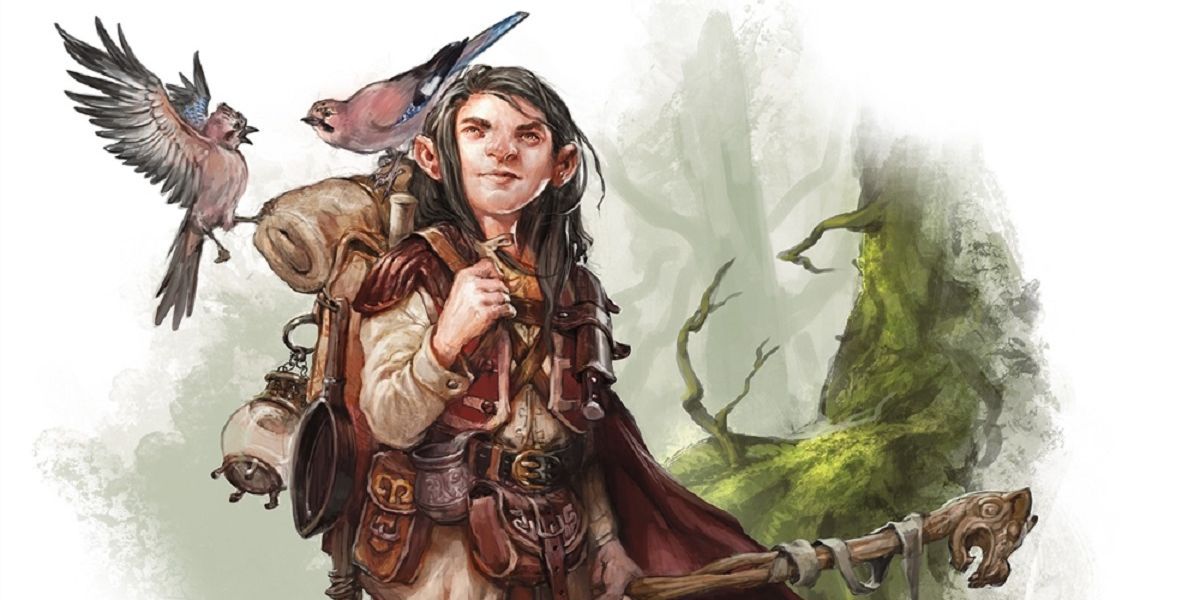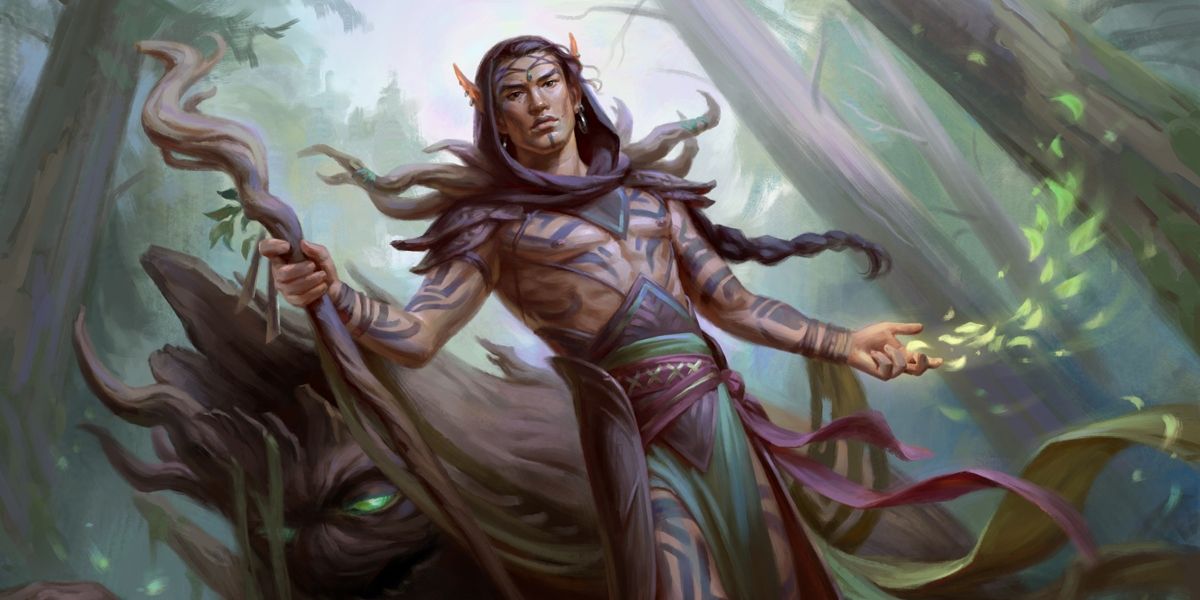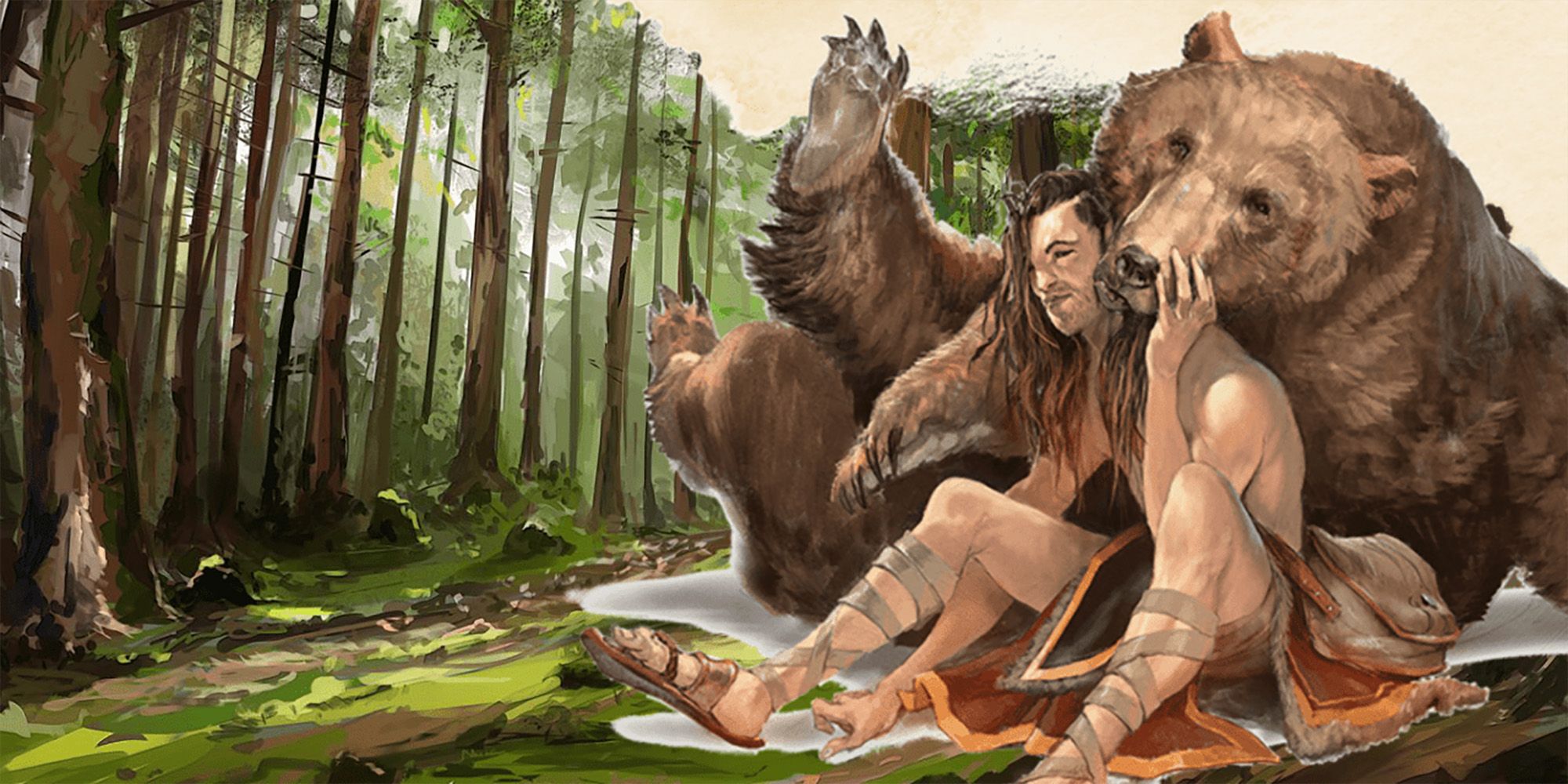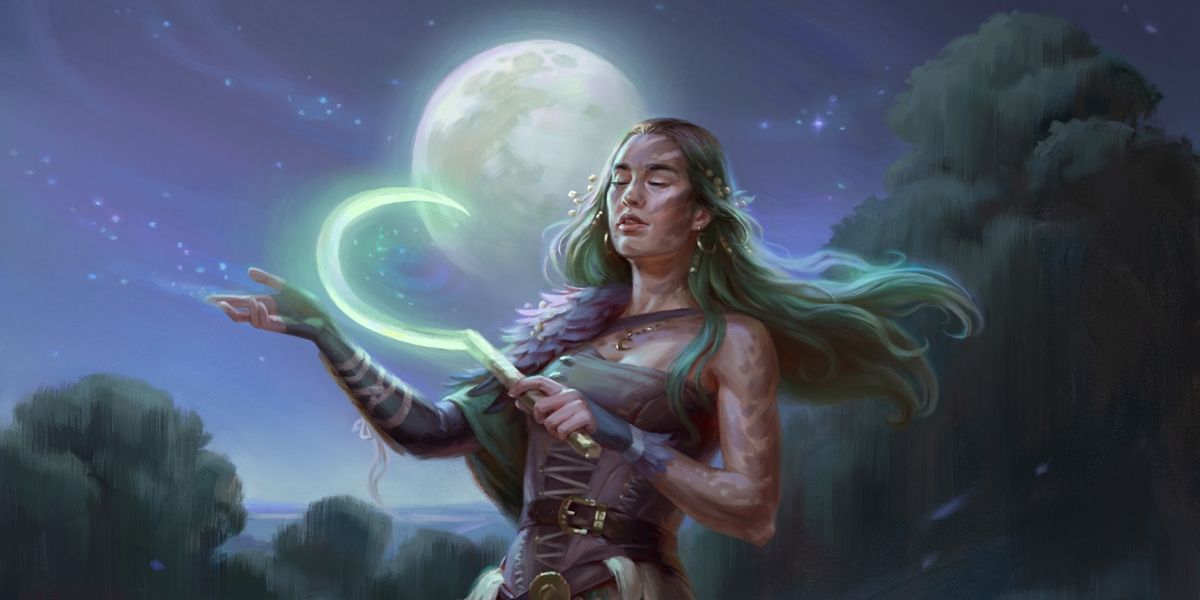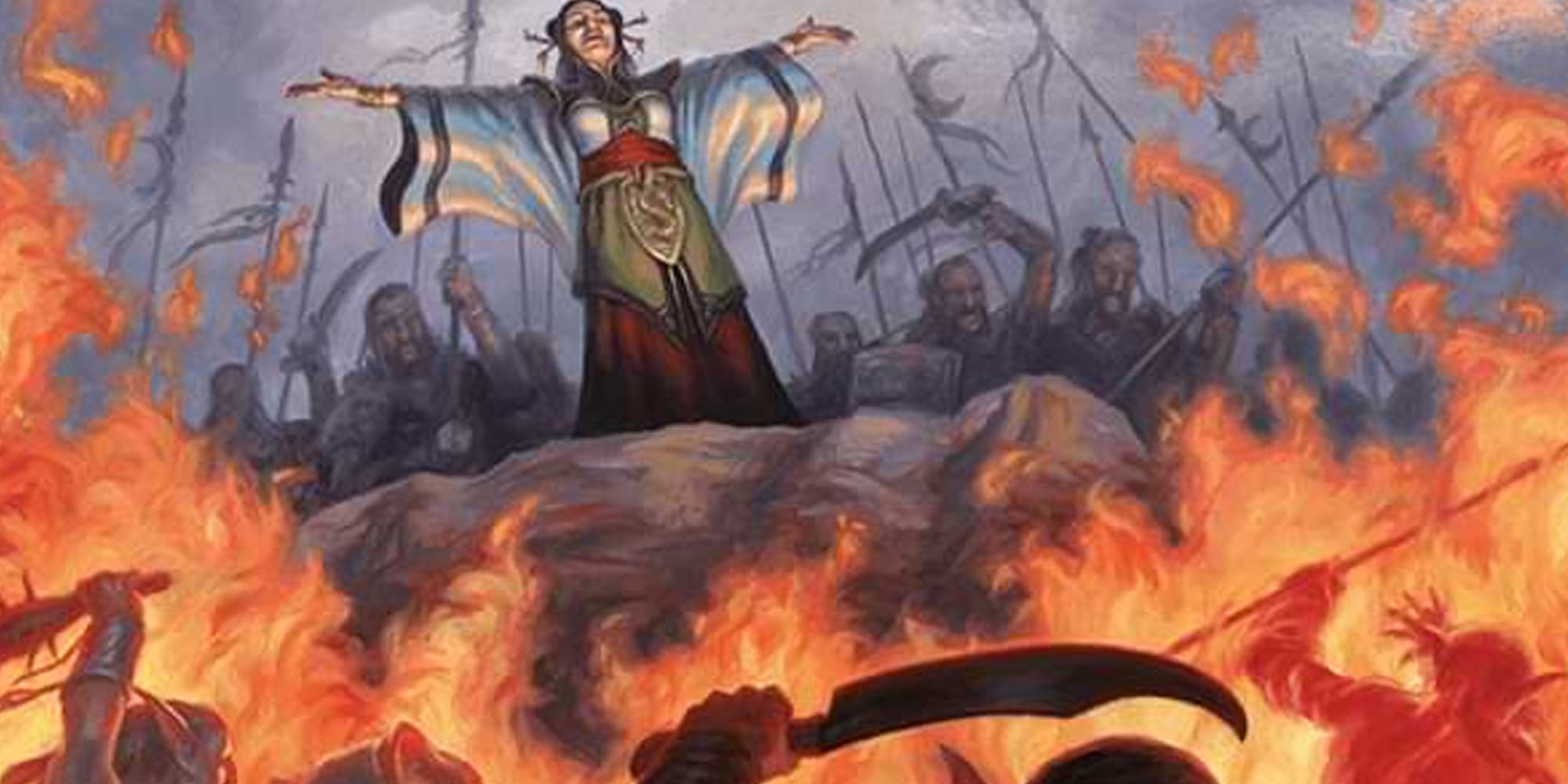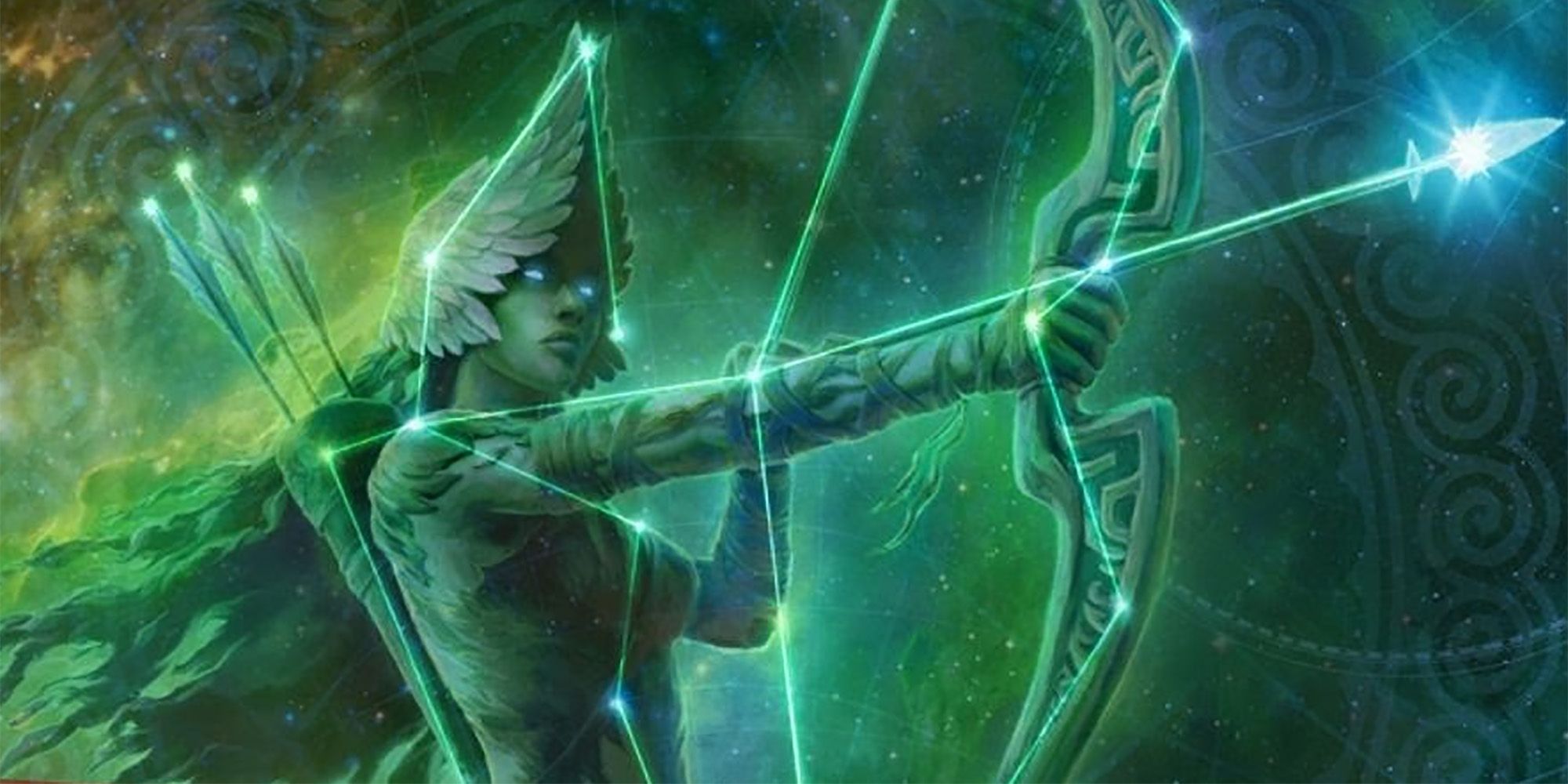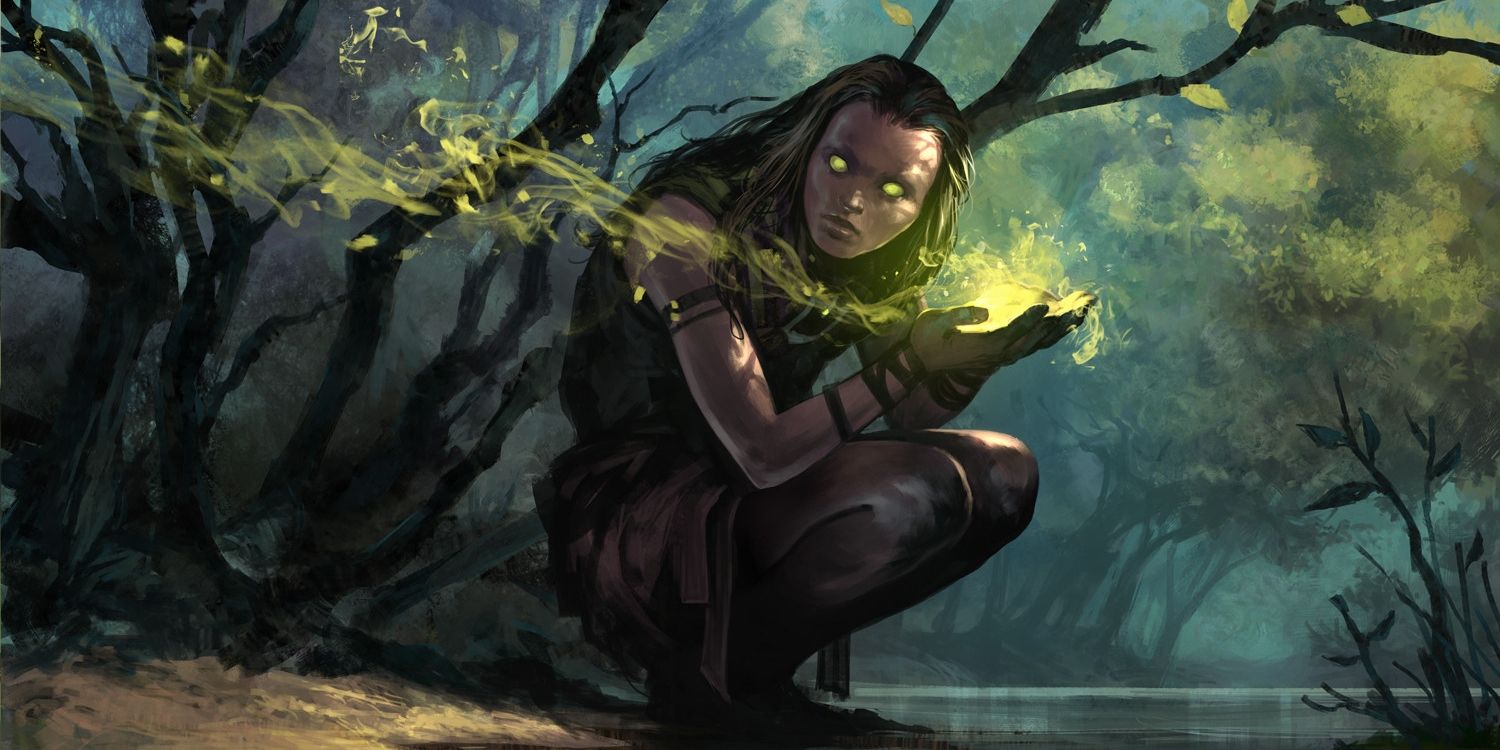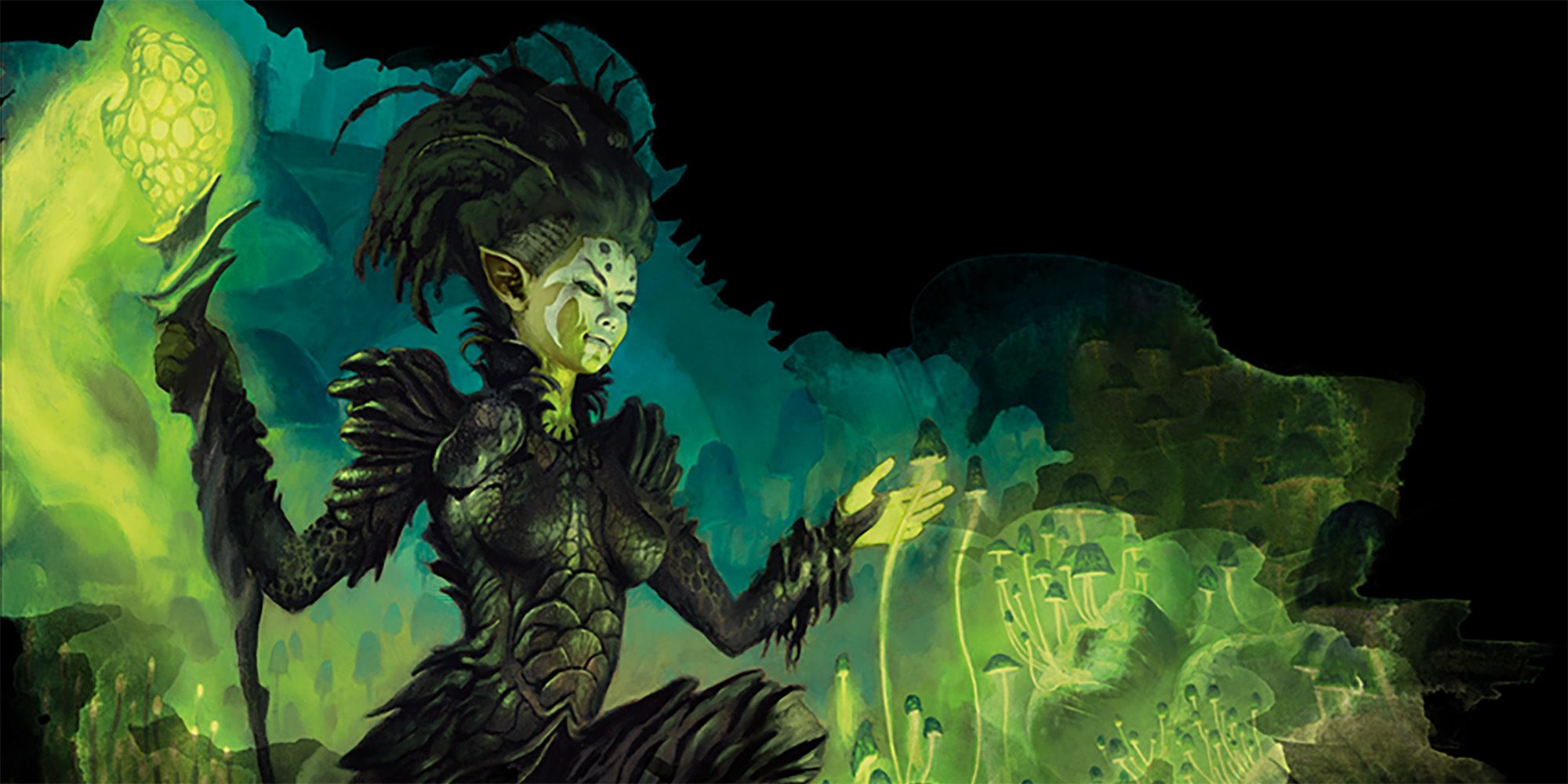The Druids of Dungeons & Dragons Fifth Edition are powerful forces with the ability to hold sway over not just the elements that compose the world around them, but also the land, animals, moon stars -- and even death itself. Regardless of the Circle a Druid chooses to follow, they have the ability to commune with nature in ways no one else would dare, making them worthy as both allies and adversaries.
Not only can Druids summon animal allies and control plant life to aid them in the fight, but many of them can also shape their bodies into dangerous, beastly, or celestial forms. They share an affinity with the natural world and the elements. Many Druids in Dungeon & Dragons spend their incredibly long lives attempting to maintain the precarious balance of nature itself. There are seven Druidic Circles to choose from when creating a player character, and while every one of them is an amazing opportunity to explore nature, some rank slightly better than others.
7. Circle of the Land Druids Cast Specialized Spells
Druids who follow this path gain a deep understanding of the land from which they hail. With eight regions to choose from, these Druids gain the ability to cast specialized spells at levels three, five, seven, and nine, connected to the land where they originally gained their abilities. These include arctic regions, grasslands, deserts, coastal regions, forests, mountains, swamps, and even the Underdark.
One of the neat things about Druids of the Land is that their affinity with their surroundings grants them abilities like Land Stride, which allows them to pass through non-magical, difficult terrain, including plant life, without expending extra movement. They also gain immunity to poison and disease at level 10. At level 14, Nature's Sanctuary makes it more difficult for creatures of the natural world to attack them. As cool as Circle of the Land Druids are to play, though, D&D 5e has expanded over the years, introducing Druid subclasses that are far more interesting.
6. 5e Druids from the Circle of the Shepherd Bond With Nature Spirits
Druids in the Circle of the Shepherd share a deep bond with the spirits of nature and the fey. They spend their days communing with and protecting those spirits and fey that can't protect themselves. Because of their affinity with these creatures, Druids in the Circle of the Shepherd prefer to maintain their distance from cities and towns, keeping to the forests, where they can better serve those that need them.
Through their spirit totems, Shepherds gain unique abilities to communicate with animals and a variety of fey creatures through their knowledge and understanding of Sylvan. As they level up, their spirit totem provides them with a summoned, incorporeal spirit based upon which of the three forms the player chooses. Each spirit grants them power. As they level up, these creatures become protected by the totem's power, keeping them safe and active longer. The Circle of the Shepherd definitely has interesting abilities, but other 5e Druid subclasses possess more exciting features.
5. Circle of the Moon Druids Cast Wild Shape as a Bonus Action
The Circle of the Moon Druids gathers at night, where they trade news and warnings meant to keep each other, and their wilderness, safe. They are rarely seen, even by other Druids, as they prefer to live solitary lives in their animal forms. Moon Druids connect to the primal world and can cast Wild Shape as a bonus action, rather than an action. They also gain access to more powerful animals than Druids of the other circles.
At level 10, Moon Druids can expend two uses of Wild Shape to transform into elemental beings. At level 14, they can cast the Alter Self spell at will, meaning they can change their appearance whenever they want to remain hidden or disguised. With such a strong connection to the moon, one would almost expect these Druids to have a lycanthropic pull, and their ability to Wild Shape definitely lends to this idea. It falls midway in the list because there is potential for this Circle to be even cooler, with a few modifications to their power that to further set them apart from the subclasses.
4. Circle of Wildfire Druids Use Destruction to Create
The Circle of Wildfire believes destruction is often at the forefront of creation, a necessary force required to encourage new growth and life. Their bond with a Primal Spirit grants them access to both destructive and creative powers, allowing them to foster life and growth in the wake of intense destruction. Their spell access is balanced so that Burning Hands is coupled with the Cure Wounds spell to burn and heal with ease.
Instead of using Wild Shape to transform into beastly forms, Wildfire Druids can summon their Primal Spirit, whose appearance they can determine. It comes with its own stat block and lasts for up to an hour. As the Druid gains levels, their bond with the Spirit becomes more powerful and enhances their magic's damage and restorative nature. Upon reaching level 14, the Wildfire Spirit can even save their Druids from death if they drop to zero hit points. There is a lot of potential for Wildfire Druids, earning them prestige among their allies. However, there are other Druid subclasses in 5e that can perform more intriguing things than wring life from destruction.
3. Circle of Stars Druids Connect With the Cosmos
Those who follow the Circle of Stars track the constellations and find hidden meaning in the patterns. Many of these Druids maintain voluminous collections of secrets and lore gathered from the stars over the ages, passing it from one Druid to the next. They carry small star maps that can focus their Druidic magic, which tends to have a celestial flair.
Guidance and Guiding Bolt are both accessible as Druid spells. Their Wild Shapes allow them to transform into starry beings rather than beasts, and empowered constellations decorate their form to grant them unique abilities. These starry shapes continue to improve as the Druid levels up. At level 14, they become partially incorporeal and gain resistance to bludgeoning, piercing, and slashing damage. Their unique connection to the cosmos definitely places them in the top three of the 5e subclasses, as there is so much potential to really take advantage of the stars wherever these Druids might go.
2. A Bond to the Feywild Powers 5e's Circle of Dreams Druids
Druids from the Circle of Dreams have a powerful bond to the Feywild and the dreamlike qualities it presents. Because of their strong affinity for the natural world, they're easily allied with good-natured Fey beings, which grant them abilities to fill the world around them with a dreamy wonder powerful enough to heal and bring joy to even the most downtrodden. They take rest and refuge in peaceful places that blur the nature of fantasy and reality.
Their powers offer healing and respite to allies. As that power grows, they gain access to the hidden pathways traversed by the Fey, allowing them to teleport themselves and their allies. At level 14, these Druids gain the ability to walk through dreams, using spells like Dream, Scry, and Teleportation Circle. The Teleportation Circle for these Druids is different in that it permits them to go to the last place they completed a long rest on their current plane. The magic these Druids possess makes them alluring characters to play, earning them a well-deserved slot in second place. Their ties to the Feywild make them both powerful and dangerous as they spread joy and wonder.
1. Circle of Spores Are DnD 5e's Most Powerful Druids
Druids who follow the Circle of Spores path are imbued with a rare ability to see potential life and beauty in decay. They can alter mold and fungi into interesting and strange new life. They wholeheartedly believe life and death are part of the same necessary cycle, with one always leading back to the other.
They develop a halo of necrotic spores that circles their head. Those spores are harmless to people around them, at least until the Druid unleashes them on an enemy. They also gain Symbiotic Entity, which permits them to bolster their hit points by awakening the spores around them, rather than Wild Shaping into beast form. At level 6, the Druid's spores can infiltrate a corpse and reanimate it, creating a zombie with one hit point that lasts for an hour.
By the time this Druid reaches level 14, the spores they share a relationship with actually affect their physical body, granting them immunity to poison, fear, blindness, and deafness. What really puts the Circle of Spores in the No. 1 slot is that most beings in Dungeons & Dragons share a deep loathing for undeath, yet these Druids celebrate it as a natural part of life, which makes them one of the game's most powerful subclass options.

